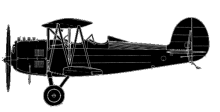
ASN Wikibase Occurrence # 293805
This information is added by users of ASN. Neither ASN nor the Flight Safety Foundation are responsible for the completeness or correctness of this information.
If you feel this information is incomplete or incorrect, you can submit corrected information.
| Date: | Saturday 14 May 2005 |
| Time: | 10:30 LT |
| Type: |  Great Lakes 2T-1A-2 |
| Owner/operator: | Charles Martin |
| Registration: | N765GL |
| MSN: | 0765 |
| Engine model: | Lycoming AEIO-360-BIG6 |
| Fatalities: | Fatalities: 0 / Occupants: 1 |
| Aircraft damage: | Substantial |
| Category: | Accident |
| Location: | Sonoma, California -
 United States of America United States of America
|
| Phase: | Unknown |
| Nature: | Private |
| Departure airport: | Sonoma, CA (0Q3) |
| Investigating agency: | NTSB |
| Confidence Rating: |
The airplane collided with the runway during an aborted takeoff following a partial loss of engine power. Prior to departure the pilot completed an engine run-up, observing no anomalies with the engine gauges or the engine's performance. During the takeoff, as the pilot began to lift off of the runway surface, the engine began to surge and he noticed a subsequent degradation in climb performance. After reaching about 30 to 40 feet above ground level (agl), he realized the airplane would not be able to continue the departure and opted to perform an emergency landing on an alternate runway. The airplane collided with the runway in a 15-degree nose low attitude. A post accident examination of the engine found that the spark plugs, the cylinders, and piston heads were heavily sooted; signatures consistent with an excessively rich fuel mixture. No other anomalies were found that would have precluded the engine from normal operation. An examination of the fuel servo revealed that the unit had a black coloration in the throat section and blue staining present near the idle valve. These signatures were consistent with a rich fuel mixture and a continuous fuel leak. During the bench testing of the servo, several small fuel leaks were noted at the idle valve, fuel diaphragm, and center body seal. Flow tests at high power settings revealed that the fuel servo was running rich, well over the prescribed maximum flows for that unit. The unit was about 28 years old and did not appear to have ever been overhauled. A representative from the engine manufacturer stated that based on the fuel servo's tested flow, the engine would have been running very rich and most likely could not have produced normal power. The servo manufacturer issued a Service Bulletin in 1990 that recommends that the unit be overhauled at engine TBO or every 10 years.
Probable Cause: a partial loss of engine power, which resulted from the fuel servo leaking and generating an excessively rich fuel/air mixture. A factor was the owner's failure to comply with a service bulletin.
Accident investigation:
 |
|
Sources:
NTSB LAX05LA173
History of this aircraft
Other occurrences involving this aircraft
| 9 February 1986 | N3773F | Executive Air | 0 | Columbia, SC |  |
sub |
Revision history:
| Date/time | Contributor | Updates |
|---|---|---|
| 10-Oct-2022 13:44 | ASN Update Bot | Added |
Corrections or additions? ... Edit this accident description
The Aviation Safety Network is an exclusive service provided by:


 ©2024 Flight Safety Foundation
©2024 Flight Safety Foundation